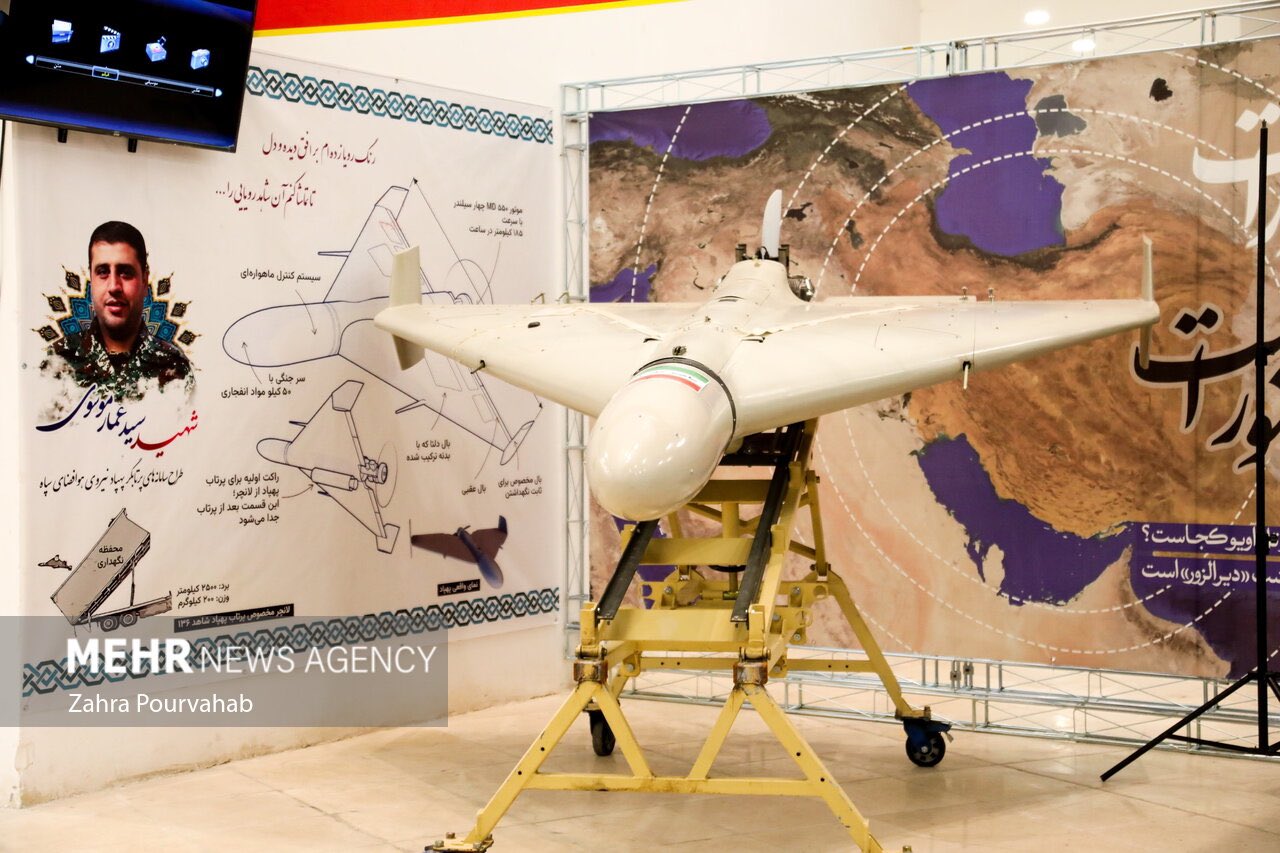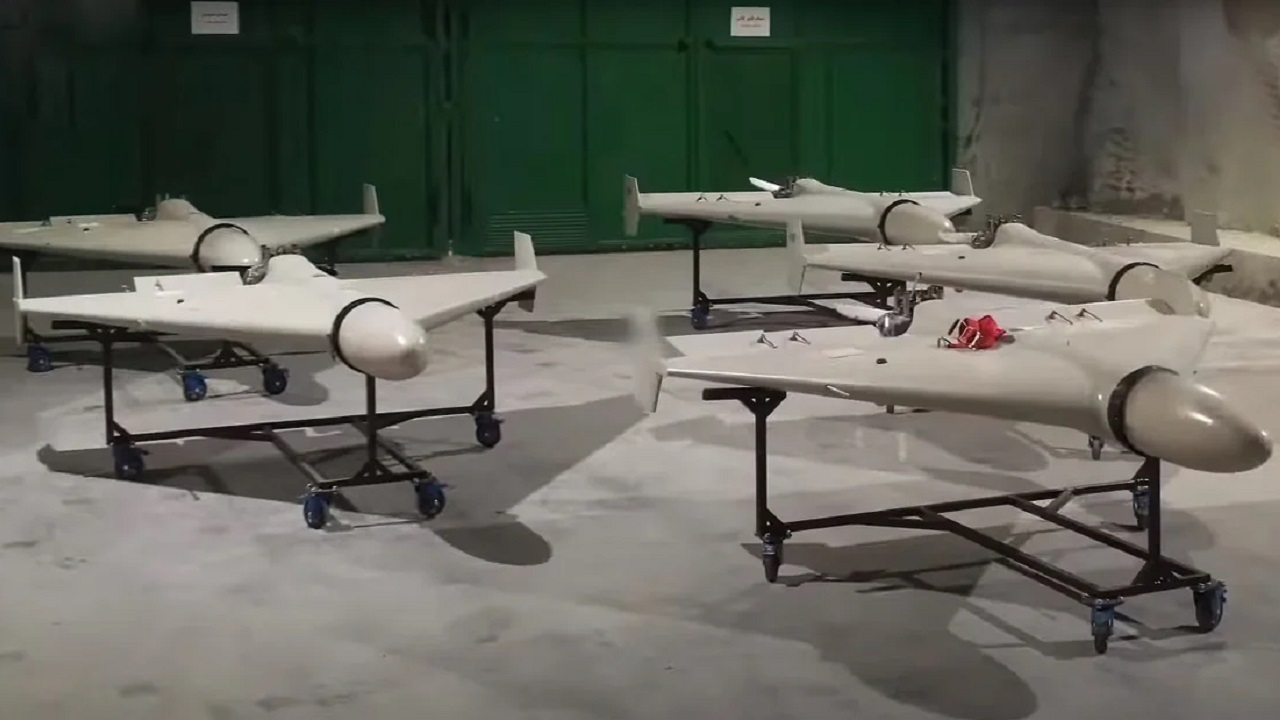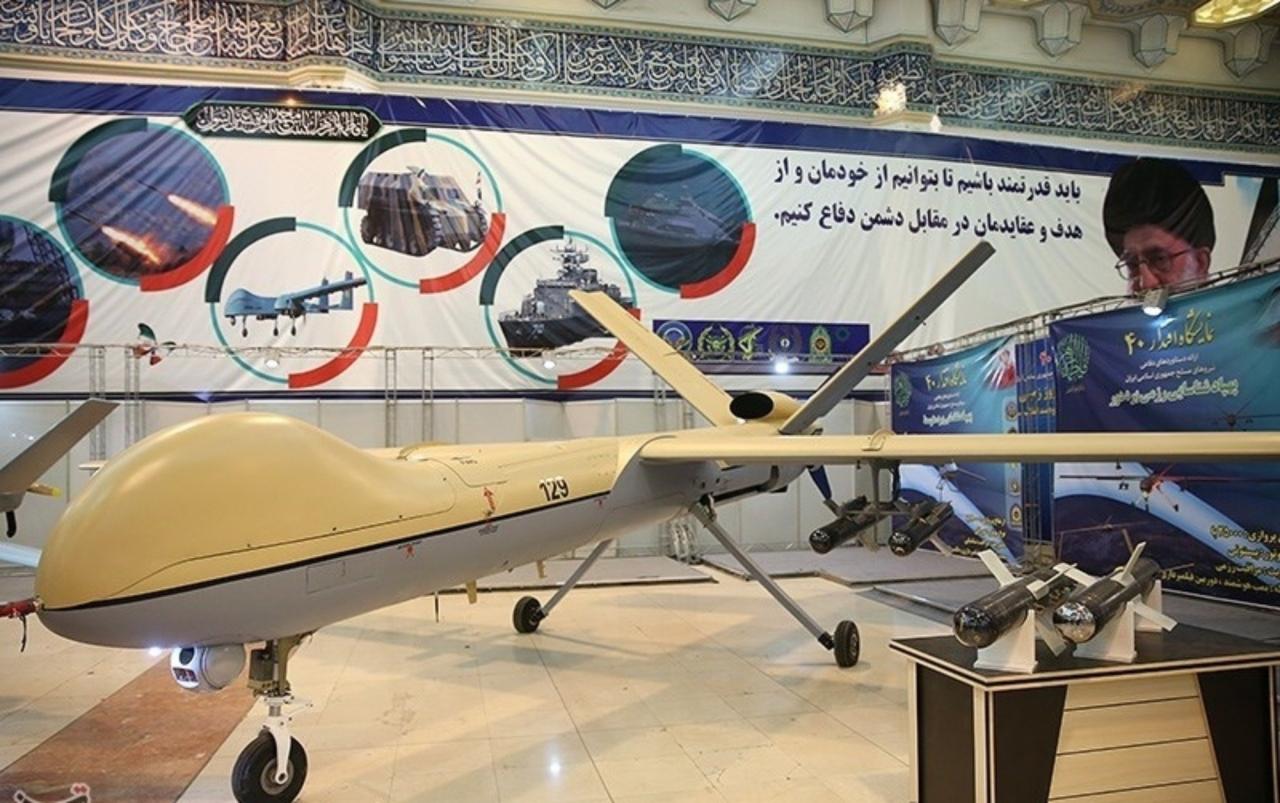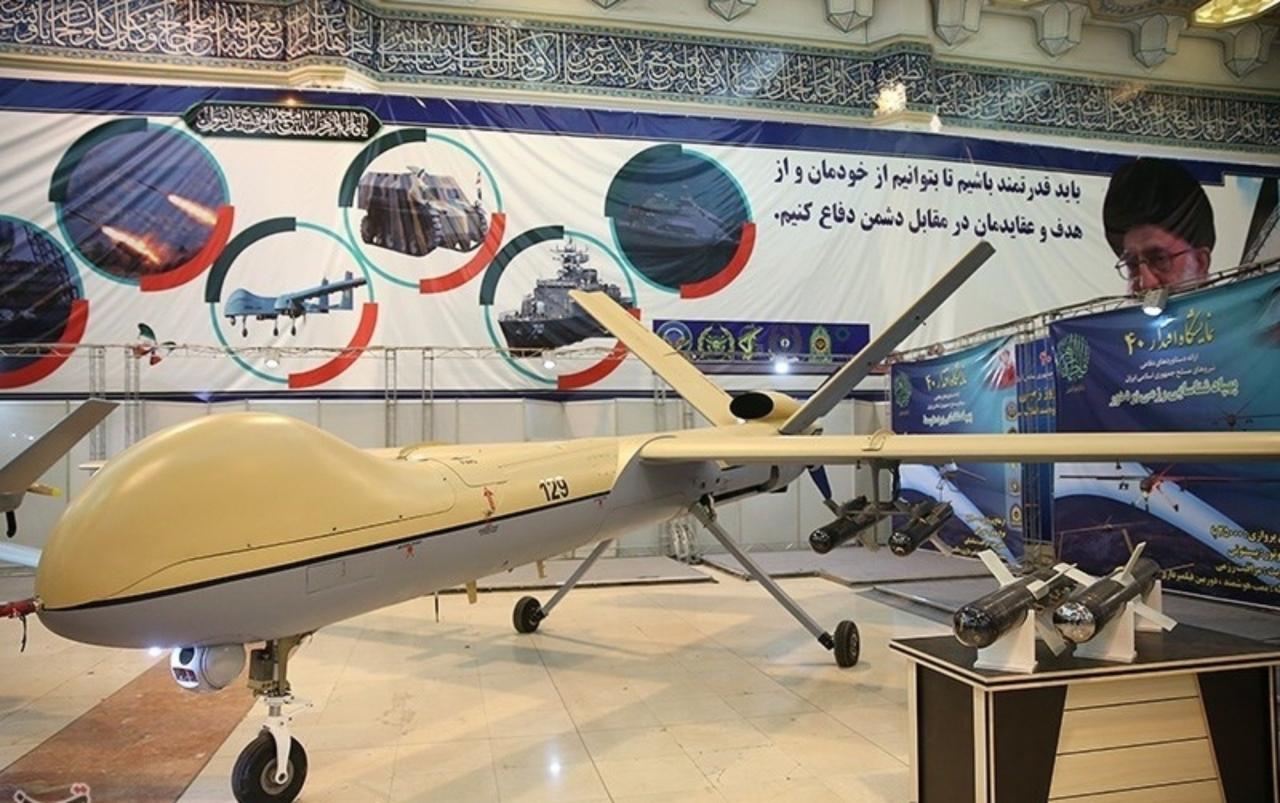Shahed drones, inexpensive and readily available, have significantly altered modern warfare. Their deployment in various conflicts has sparked intense debate regarding their effectiveness, ethical implications, and the challenges they pose to conventional defense systems. This overview delves into the technical aspects, operational capabilities, manufacturing processes, impact, countermeasures, and future prospects of this controversial unmanned aerial vehicle (UAV).
From their relatively simple design to their devastating impact on civilian infrastructure and military targets, the Shahed drone represents a paradigm shift in asymmetric warfare. Understanding its capabilities and limitations is crucial for navigating the complex security landscape of the 21st century.
Shahed Drone: A Comprehensive Overview
The Shahed drone, a relatively low-cost and readily deployable unmanned aerial vehicle (UAV), has significantly impacted modern warfare and geopolitical dynamics. This analysis delves into its technical specifications, operational capabilities, manufacturing processes, consequences of its use, countermeasures, and potential future developments.
Shahed Drone Technical Specifications
Understanding the Shahed drone’s technical specifications is crucial for assessing its capabilities and limitations. The following table summarizes key features:
| Specification | Value | Specification | Value |
|---|---|---|---|
| Length | Approximately 2 meters | Wingspan | Approximately 2.5 meters |
| Weight | Approximately 200 kg | Payload Capacity | Up to 40 kg (varies by model) |
| Range | 1000-2500 km (depending on payload and wind conditions) | Flight Duration | 6-12 hours (depending on payload and wind conditions) |
The Shahed drone typically utilizes a small, relatively simple piston engine fueled by gasoline or a similar type of fuel. This contributes to its low production cost and ease of maintenance. Its guidance and navigation systems rely on a combination of inertial navigation, GPS, and potentially other less sophisticated guidance systems. While not known for exceptional precision compared to more advanced drones, its simplicity allows for relatively easy operation and mass production.
Shahed Drone Operational Capabilities

The Shahed drone’s operational capabilities are a key factor in its widespread deployment. Its operational flexibility allows for a range of tactical applications.
Deployment methods involve launching from various ground-based platforms, potentially including simple launch ramps. The drone is capable of performing reconnaissance, surveillance, and attack missions. Reconnaissance missions involve gathering intelligence through imagery and sensor data. Surveillance missions focus on monitoring targets over extended periods. Attack missions involve delivering explosives or other payloads to designated targets.
Operational altitudes vary depending on the mission, ranging from low altitudes to several thousand feet. Speed is relatively moderate, optimizing endurance rather than velocity.
Shahed Drone Manufacturing and Production

Several entities are believed to be involved in the manufacturing and production of Shahed drones, with Iran being the primary known producer. The manufacturing process is likely characterized by a focus on cost-effectiveness and ease of production, employing readily available components and materials. This contributes to the drone’s affordability and the possibility of mass production.
- Lightweight composite materials
- Off-the-shelf electronic components
- Simple propulsion systems
- Basic guidance and navigation systems
- Explosives or other payloads
Shahed Drone Impact and Consequences

The widespread use of Shahed drones has had a significant impact on military strategies and tactics, demonstrating the effectiveness of low-cost, high-volume attacks. However, the consequences of these attacks have also raised significant ethical and humanitarian concerns.
“The use of Shahed drones has fundamentally altered the battlefield, forcing a reassessment of air defense strategies.”
The Shahed drone, a relatively inexpensive unmanned aerial vehicle, has garnered significant attention for its use in recent conflicts. For more detailed information on its capabilities and operational history, you can consult this comprehensive resource on the shahed drone. Understanding its design and tactical applications is crucial for analyzing modern warfare strategies and technological advancements in drone technology.
The impact of the Shahed drone on military tactics is undeniable.
[Attribution needed, hypothetical expert quote]
The Shahed drone, known for its low-cost and relatively simple design, has become a significant factor in modern warfare. Understanding its capabilities requires examining various drone payload strategies, and a useful comparison point might be the innovative approaches to drone delivery systems such as those showcased at remington drone loads , which highlights advanced logistical considerations. This contrast helps us better appreciate the technological and strategic differences between these two types of unmanned aerial vehicles.
“The indiscriminate nature of Shahed drone attacks poses a significant threat to civilian populations and infrastructure.”
[Attribution needed, hypothetical expert quote]
Compared to other UAVs, the Shahed drone stands out for its relatively low cost and ease of production, allowing for mass deployment. While its precision and technological sophistication may be less advanced than more expensive alternatives, its effectiveness in achieving certain military objectives cannot be ignored.
Shahed Drone Countermeasures and Defenses
Various countermeasures and defensive strategies have been employed against Shahed drones, highlighting the ongoing arms race in this area of warfare. The effectiveness of these strategies varies depending on factors such as the number of drones involved and the specific countermeasures used.
| Countermeasure | Description | Effectiveness | Limitations |
|---|---|---|---|
| Electronic Warfare | Jamming GPS signals or disrupting communication links | Moderately effective against individual drones, less effective against swarms | Requires specialized equipment and can be countered |
| Physical Interception | Using missiles, anti-aircraft guns, or other weapons to shoot down drones | Highly effective against individual drones, challenging against swarms | Requires precise targeting and can be expensive |
| Cyber Warfare | Targeting the drone’s control systems or software | Potentially highly effective, but requires advanced capabilities | Requires specific knowledge of the drone’s systems |
| Deception Tactics | Using decoys or other methods to confuse or divert the drones | Variable effectiveness, dependent on the sophistication of the decoy | Requires careful planning and execution |
In a hypothetical scenario of a Shahed drone swarm attack, a layered defense would be most effective. This could involve electronic warfare to disrupt communication and navigation, followed by physical interception to target individual drones, supported by cyber warfare efforts to disable or hijack control systems.
Shahed Drone Future Developments and Upgrades
Future developments of the Shahed drone could focus on enhancing its capabilities and addressing its limitations. Technological advancements in various areas could lead to significant improvements.
A potential future Shahed drone design might incorporate improved guidance and navigation systems, potentially including AI-assisted targeting and autonomous flight capabilities. Enhanced payload capacity could allow for the delivery of more powerful warheads or other types of munitions. Increased range and endurance could extend the drone’s operational capabilities. Improved stealth capabilities could make the drone harder to detect and intercept.
The incorporation of more sophisticated countermeasure systems could further enhance its survivability. A visual representation of this improved design might show a more streamlined airframe, with reduced radar signature and potentially incorporating features for improved maneuverability and survivability.
The Shahed drone, while a relatively inexpensive and easily produced weapon, has profoundly impacted global conflict. Its widespread use necessitates a comprehensive understanding of its capabilities, limitations, and the ongoing development of effective countermeasures. Further research and international cooperation are crucial to mitigate the humanitarian consequences and address the evolving technological challenges posed by this UAV.
Frequently Asked Questions
What is the lifespan of a Shahed drone?
The operational lifespan varies depending on usage and maintenance, but is generally considered relatively short compared to more advanced drones.
How easily are Shahed drones detected?
Detection depends on various factors, including the specific radar and detection systems employed, weather conditions, and the drone’s flight profile. Their relatively small size and low-flying capabilities make detection challenging.
What is the cost of a Shahed drone?
Estimates vary, but reports suggest the production cost is significantly lower than many other comparable UAVs, contributing to their widespread availability.
Are Shahed drones easily repairable?
Repair capabilities vary depending on the extent of damage. Simpler repairs may be possible in the field, while more extensive damage may require specialized facilities.
